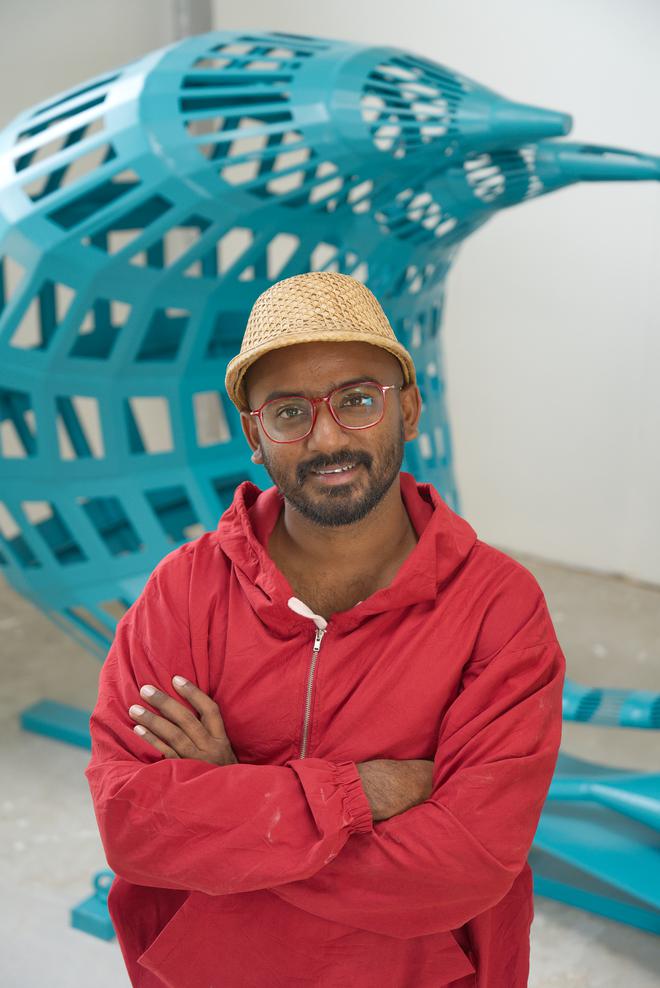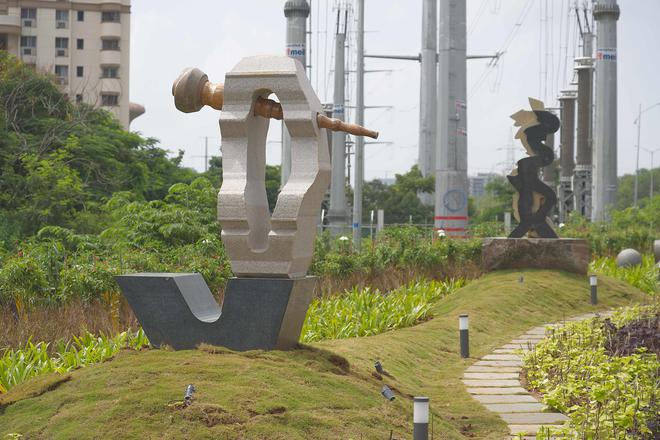Brood, a large format sculpture (150x256x130cm) that symbolises the human family system, conceptualised and designed by Hyderabad artist Harsha Durugadda, will be on view at Sculpture by the Sea, an annual sculpture event hosted in Australia. The 2023 edition will be held on the Bondi to Tamarama coastal walk in Sydney, from October 20 to November 6. This is the fourth time Harsha’s sculpture has been chosen for Sculpture by the Sea, one of the largest outdoor sculpture exhibitions in the world. This year is the 25th year of the exhibition and will feature 105 sculptures by 112 artists from 21 countries.
The sculpture made of Corten steel and painted in blue was designed at Harsha’s studio on the outskirts of Hyderabad. The elliptical sculpture with a void at its centre is surrounded by a metallic surface that is interconnected yet permeable. Harsha explains that the structure of Brood represents the family system that is unique as well as embraces the environment, thus being porous to changes.
The sculpture is a reflection of the times we live in, he adds: “We like to think of ourselves as a single entity but the more we learn to embrace the diversity in food, culture and language, we will enjoy life all the more. The sculpture also has a dialogue with the landscape.”
Art and the artist
Brood will be on exhibit on the seashore and having visited Bondi beach for the earlier exhibitions, Harsha says that the design factored in the play of light and sunset hues on the beach and how visitors will view the sculpture against the horizon.
Be it Brood or Harsha’s earlier sculptures such as Conversation, Selfish Love and Column of Sound begin with him visualising and playing with forms. He first makes small scale models and improvises the design, deliberating how it will be interpreted. “The major change that has happened in my life in recent years is moving to the outskirts of Hyderabad to live on a farm (Oorna permaculture farm). It has helped me look at people and art differently,” he says. Harsha does not look at the city with disdain though he understands that most urban cities are planned like prisons, making its citizens yearn for a getaway.

Harsha designed the initial structure of Brood after which the fabricators took over. He likens his large format sculptures to architectural pieces.
He enjoys designing sculptures for public spaces and says the joy lies in people who are not acquainted with art drawing their own interpretations. “There are times when I have been there on the beach and no one knows I am the artist. A visitor passing by can be a child, a mechanical engineer or a doctor and might say that the sculpture looks like a toy or that they want to climb on it. In contrast, a gallery would attract a defined audience such as artists, art collectors or art students.”

Recently, two sculptures designed by Harsha were installed in public spaces in Gachibowli, Hyderabad, and another was installed at the Bengaluru airport. One of the sculptures installed in Hyderabad is titled Piercing a Mountain. He explains that the large-scale stone sculpture represents the human state when it is pierced by a catastrophe such as an environmental crisis or a pandemic.
Harsha will be travelling to Sydney for Sculpture by the Sea and on returning, will work towards showcasing his work at the India Art Fair and a show in Milan next year.







